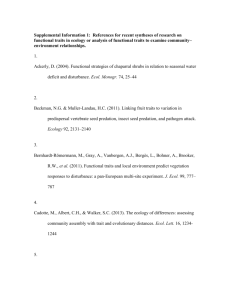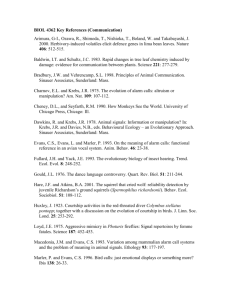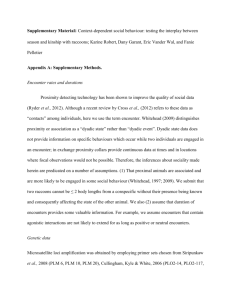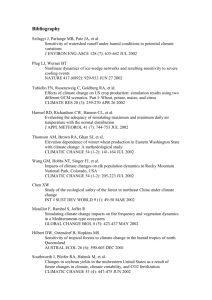file - BioMed Central
advertisement
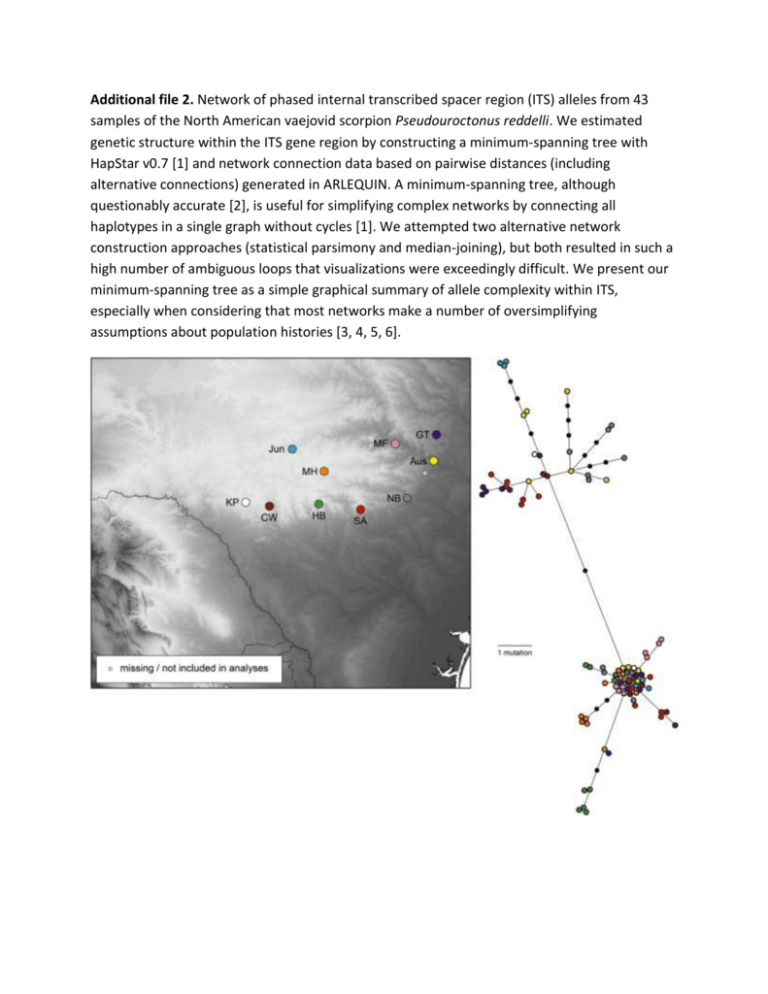
Additional file 2. Network of phased internal transcribed spacer region (ITS) alleles from 43 samples of the North American vaejovid scorpion Pseudouroctonus reddelli. We estimated genetic structure within the ITS gene region by constructing a minimum-spanning tree with HapStar v0.7 [1] and network connection data based on pairwise distances (including alternative connections) generated in ARLEQUIN. A minimum-spanning tree, although questionably accurate [2], is useful for simplifying complex networks by connecting all haplotypes in a single graph without cycles [1]. We attempted two alternative network construction approaches (statistical parsimony and median-joining), but both resulted in such a high number of ambiguous loops that visualizations were exceedingly difficult. We present our minimum-spanning tree as a simple graphical summary of allele complexity within ITS, especially when considering that most networks make a number of oversimplifying assumptions about population histories [3, 4, 5, 6]. 2 References 1. Teacher AGF, Griffiths DJ: HapStar: Automated haplotype network layout and visualisation. Mol Ecol Resour 2011, 11:151-153. 2. Woolley SM, Posada D, Crandall KA: A comparison of phylogenetic network methods using computer simulation. PLoS ONE 2008, 3:e1913. 3. Knowles LL, Maddison WP: Statistical phylogeography. Mol Ecol 2002, 11:2623-2635. 4. Nielsen R, Beaumont MA: Statistical inferences in phylogeography. Mol Ecol 2009, 18:1034-1047. 5. Salzburger W, Ewing GB, von Haeseler A: The performance of phylogenetic algorithms in estimating haplotype genealogies with migration. Mol Ecol 2011, 20:1952-1963. 6. Marduyyn P: Trees and/or networks to display intraspecific DNA sequence variation?. Mol Ecol 2012, 21:3385-3390.


